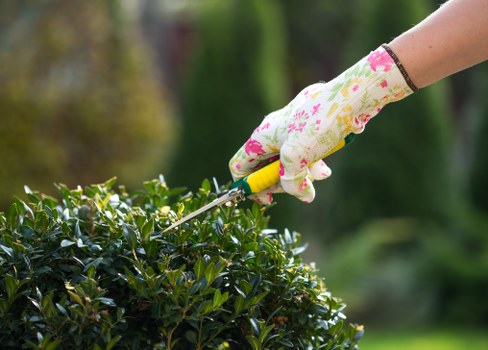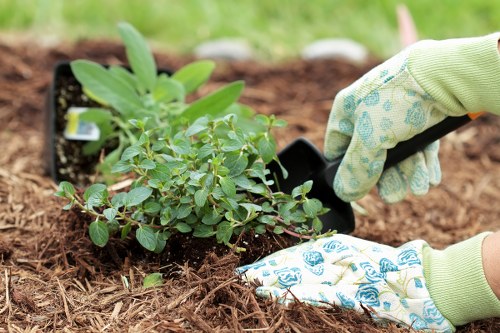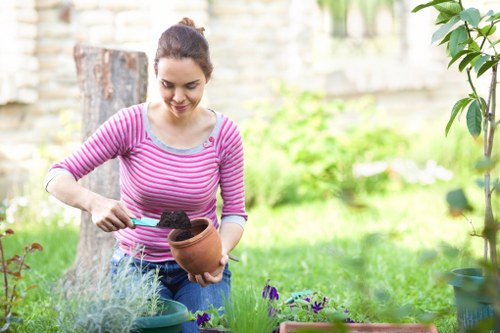Comprehensive Guide to Garden Maintenance in Cricklewood
Introduction to Garden Maintenance in Cricklewood

Maintaining a beautiful garden in Cricklewood requires a combination of proper planning, regular upkeep, and a keen understanding of the local climate and soil conditions. Whether you’re a seasoned gardener or a beginner, keeping your garden in top shape can enhance the beauty of your home and provide a peaceful sanctuary.
Cricklewood, located in the heart of London, offers a unique environment for gardening enthusiasts. The area’s temperate climate and diverse plant species make it an ideal place for cultivating a variety of plants, from vibrant flowers to lush shrubs and sturdy trees.
In this guide, we will delve into the essential aspects of garden maintenance specific to Cricklewood, providing you with actionable tips and strategies to keep your garden thriving all year round.
Understanding Cricklewood’s Climate

The first step in effective garden maintenance is understanding the local climate. Cricklewood experiences a temperate maritime climate, characterized by mild winters and warm summers. This climate is conducive to growing a wide range of plants, but it also comes with its own set of challenges.
Rainfall is relatively evenly distributed throughout the year, but certain seasons may bring heavier downpours, which can affect soil drainage and plant health. It’s important to select plants that are well-suited to these conditions and to implement proper drainage solutions in your garden design.
Temperature fluctuations can also impact plant growth. Protecting sensitive plants from extreme cold or heat through strategic placement and appropriate covering can help ensure their survival and prosperity.
Soil Preparation and Maintenance

Healthy soil is the foundation of a thriving garden. Cricklewood’s soil varies, but generally, it ranges from clay to loam. Understanding your soil type is crucial for selecting the right plants and amendments.
Regularly testing your soil’s pH and nutrient levels can provide valuable insights into what your garden needs. Adding organic matter such as compost or well-rotted manure can improve soil structure, enhance fertility, and promote beneficial microbial activity.
Implementing mulch in your garden not only helps retain moisture but also regulates soil temperature and suppresses weed growth. Organic mulches like bark or straw are excellent choices for Cricklewood gardens.
Plant Selection and Care

Choosing the right plants is essential for a successful garden. In Cricklewood, a mix of perennials, annuals, shrubs, and trees can provide year-round interest and variety.
Consider native plants as they are well-adapted to the local climate and soil conditions, requiring less water and maintenance. Additionally, incorporating a variety of plant types can enhance biodiversity and attract beneficial insects and pollinators.
Regular pruning, deadheading, and staking can keep plants healthy and encourage robust growth. Pay attention to each plant’s specific needs and adjust your care routine accordingly.
Lawn Care Tips for Cricklewood Gardens

A well-maintained lawn adds a polished look to your garden. In Cricklewood, it’s important to choose grass varieties that thrive in the local climate and can withstand the area’s weather patterns.
Mowing your lawn regularly, but not too short, promotes healthy grass growth and helps prevent weeds. Watering early in the morning can reduce evaporation and minimize the risk of fungal diseases.
Fertilizing your lawn in the spring and autumn can provide the necessary nutrients for strong root development and lush green growth throughout the year.
Seasonal Garden Maintenance Tasks

Spring Maintenance
Spring is a critical time for preparing your garden. Start by clearing out any debris from the winter months and inspecting your plants for damage.
Planting new flowers and shrubs can help jumpstart your garden’s growth. It’s also the perfect time to apply a balanced fertilizer to replenish soil nutrients.
Summer Care
During the summer, focus on regular watering and pest control. Mulching can help retain moisture and keep your plants cool.
Pruning back overgrown areas ensures proper air circulation and reduces the risk of disease.
Autumn Preparation
As temperatures begin to drop, prepare your garden by cleaning up fallen leaves and dead plant material. Plant bulbs for spring blooms and protect sensitive plants from the upcoming cold.
Aerating your lawn in the autumn can improve soil health and prepare it for the next growing season.
Winter Protection
In winter, provide extra protection to your garden by covering delicate plants and ensuring that soil remains healthy through mulching and avoiding waterlogging.
Maintaining a basic garden structure during winter can make spring maintenance much easier.
Tools and Equipment for Garden Maintenance

Having the right tools is essential for efficient garden maintenance. Invest in high-quality tools such as pruners, a sturdy hose, a reliable lawnmower, and gardening gloves to protect your hands.
Other useful equipment includes a wheelbarrow for transporting materials, a spade for digging, and a rake for collecting leaves and debris.
Regularly maintaining and cleaning your tools will extend their lifespan and ensure they function effectively when needed.
Pest and Disease Management

Managing pests and diseases is crucial for maintaining a healthy garden. Integrated Pest Management (IPM) strategies can help control pest populations with minimal impact on beneficial insects.
Regularly inspect your plants for signs of pests or diseases and take prompt action when issues are detected. Natural remedies and organic treatments are preferred to maintain an eco-friendly garden.
Encouraging natural predators, such as ladybugs and birds, can help keep pest populations in check.
Watering Strategies

Effective watering is key to garden maintenance. In Cricklewood, the goal is to provide adequate moisture without overwatering, which can lead to root rot and other issues.
Drip irrigation systems are efficient for delivering water directly to the plant roots, reducing evaporation and conserving water.
Mulching also plays a significant role in retaining soil moisture and minimizing the need for frequent watering.
Enhancing Garden Aesthetics

Aesthetics are an important aspect of garden maintenance. Incorporating elements such as pathways, garden furniture, and decorative plant arrangements can enhance the visual appeal of your garden.
Using a variety of plant colors and textures adds depth and interest, creating a more inviting space.
Regularly maintaining these elements ensures that your garden remains a beautiful and enjoyable part of your home.
Sustainable Gardening Practices

Composting
Composting is a sustainable way to recycle garden waste and enrich your soil with organic matter. Creating a compost pile or using a compost bin can turn kitchen scraps and garden debris into valuable fertilizer.
Rainwater Harvesting
Collecting rainwater for your garden reduces reliance on tap water and conserves this precious resource. Installing rain barrels or other harvesting systems can provide an efficient way to water your plants.
Native Plant Utilization
Using native plants in your garden supports local biodiversity and requires less maintenance, as these plants are naturally adapted to the local environment.
Energy-Efficient Practices
Maximizing natural light and minimizing the need for artificial lighting or heating can make your garden more energy-efficient and environmentally friendly.
Hiring Professional Garden Maintenance Services

While DIY garden maintenance can be rewarding, hiring professional services in Cricklewood can save time and ensure expert care. Professional gardeners bring specialized knowledge and experience to maintain your garden’s health and beauty.
Services may include regular mowing, pruning, pest control, and seasonal planting, tailored to your garden’s specific needs.
Investing in professional maintenance allows you to enjoy a well-kept garden without the hassle of daily chores.
DIY Garden Maintenance Tips

Regular Weeding
Keeping your garden free of weeds is essential for plant health. Regular weeding prevents competition for nutrients and reduces the risk of pests and diseases.
Pruning Techniques
Proper pruning promotes healthy growth and maintains the desired shape and size of your plants. Learn the appropriate techniques for different plant types to avoid damage.
Soil Enrichment
Enriching your soil with organic matter improves fertility and structure, supporting robust plant growth. Regularly add compost or manure to maintain soil health.
Plant Rotation
Rotating plant species each season can prevent soil depletion and reduce the incidence of pests and diseases, ensuring a balanced and healthy garden ecosystem.
Seasonal Planting Guides

Understanding the best times to plant various species can enhance your garden’s productivity and beauty.
- Spring: Bulbs, annuals, and early perennials.
- Summer: Heat-tolerant flowers, vegetables, and herbs.
- Autumn: Hardy perennials, shrubs, and trees.
- Winter: Protecting and maintaining existing plants.
Adhering to these guidelines ensures that your plants flourish in their optimal growing conditions.
Conclusion: Maintaining a Beautiful Garden in Cricklewood

Effective garden maintenance in Cricklewood involves a blend of understanding the local climate, preparing and nurturing the soil, selecting appropriate plants, and implementing sustainable practices. By following the tips and strategies outlined in this guide, you can achieve a vibrant and healthy garden that enhances your home’s beauty and provides a relaxing outdoor space.
Whether you choose to maintain your garden yourself or enlist the help of professionals, consistent care and attention will ensure that your garden remains a source of pride and enjoyment for years to come.
Don’t wait to transform your garden. Contact us today to learn more about our garden maintenance services and how we can help you achieve the garden of your dreams in Cricklewood.